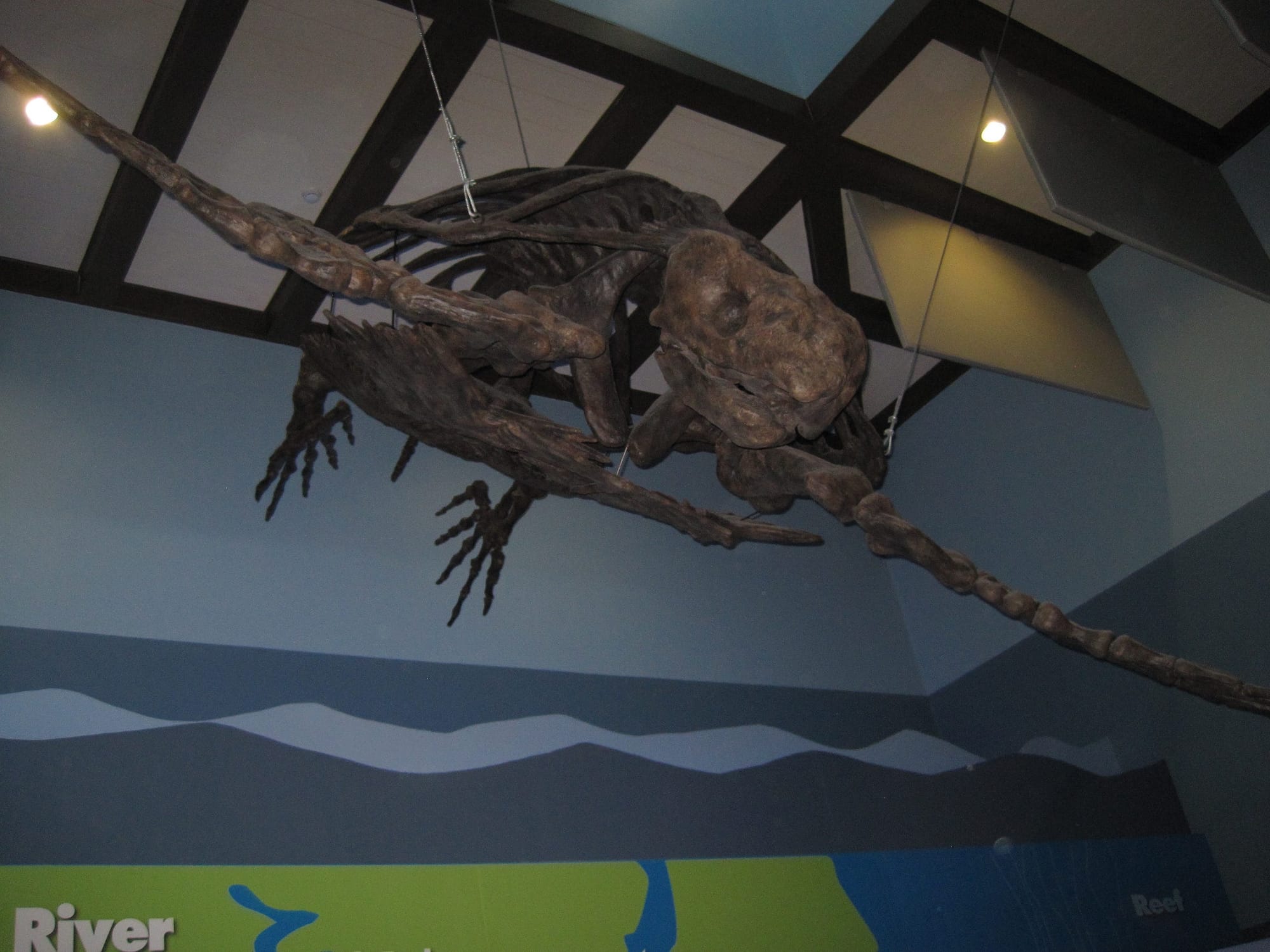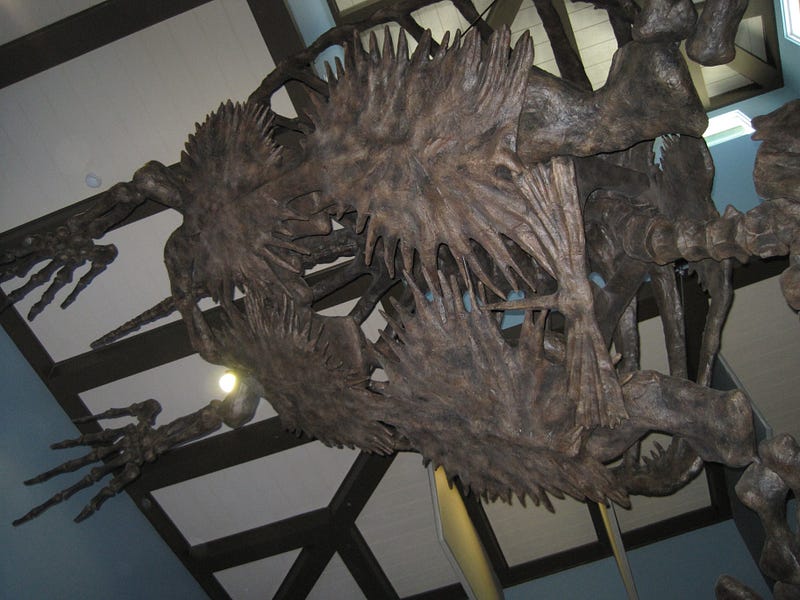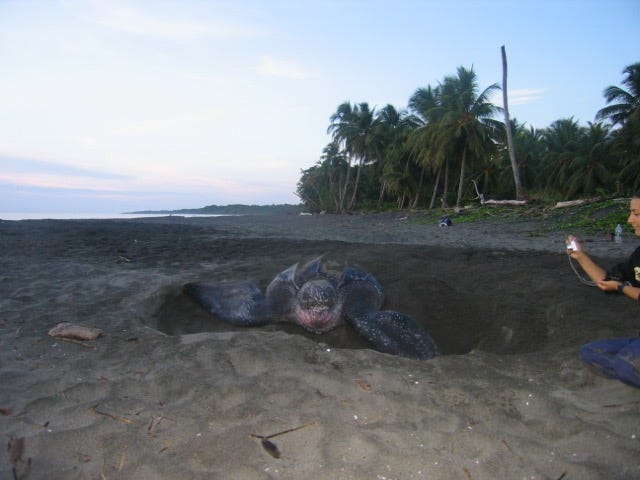
I promised you an uplifting story about sea turtles this time, so why is the top picture of a skeleton? This particular skeleton is a cast, or model, of an ancient extinct sea turtle called Archelon ischyros, often referred to as many prehistoric species are by its genus name only. Archelon lived during a time period when much of central North America was covered by a shallow sea, about 70–80 million years ago.
These giants were the largest turtles known to exist. The largest specimen found measuring over 4 meters long, two to three times to average length of their closest living relative the leatherback sea turtle, Dermochelys coriacea. Much like its living relative, this turtle did not have a hard shell covering its back, but a leathery shell supported by a skeletal framework. If you look carefully at the picture, you can see the gaps in the rib-cage. Most modern turtles would not have those, the carapace would be smooth and seamless.
In addition, the plates making up the underside of the shell, known as the plastron, were also not fully connected, as you can see below.

The evolutionary branch that included Archelon, known as Protostegidae, existed for approximately 50 million years, before the went extinct during the events at the end of the Cretaceous Period (more famous for also wiping out the dinosaurs, but keep in mind it was a ~75% extinction level event). Their closest living relatives today are considerably smaller, but still the largest living turtle, and a species of which I have become rather fond.

Some of you might be wondering at this point what is so uplifting about a group of ancient sea turtles that are now extinct. Firstly, I find the evolutionary history of sea turtles quite fascinating. Sea turtles, like whales, originally descend from a group of freshwater turtles that returned to the ocean. Secondly, it is interesting to compare it to its living relative. Just looking at the pictures, you can see how they differ as well as the similarities. Archelon’s beak was much more hook-like and well-suited for eating prey like squid, while the leatherback has a much more rounded head that works well for consuming jellyfish.
However, I think the most uplifting thing about discussing prehistoric sea turtles involves a counter to some of the doom and gloom of my last story. Sea turtles have been around in one form or another for a long time. They are incredibly resilient, and even survived some of the most catastrophic events in geological history. This gives me at least some hope. We have caused a lot of problems for modern sea turtles and not all of them are fixed, but we are working on it. If we keep it up, then I think that sea turtles will be able to bounce back. I know I probably wouldn’t bother telling these stories if I thought there wasn’t any hope.
Species conservation can seem like a hopeless problem sometimes. Just this week, I read about the death of the last individual of a species of Panamanian tree frog, but I don’t want you all to despair. I write these stories because I find them enjoyable and because I like sharing them. I don’t need to tell you the benefits of nature. If you’re reading my stories, you probably already know. All I ask is that you share your stories too. Share them with me, share them with your friends, share them with complete strangers if that doesn’t make you too uncomfortable. If we all keep sharing, then we all do our part to keep nature alive inside of us, as well as outside.
Hopefully, this story made you feel a bit better after the downer last time. For next time, I’m going to talk about something a bit less heavy: the practice of giving animals names.